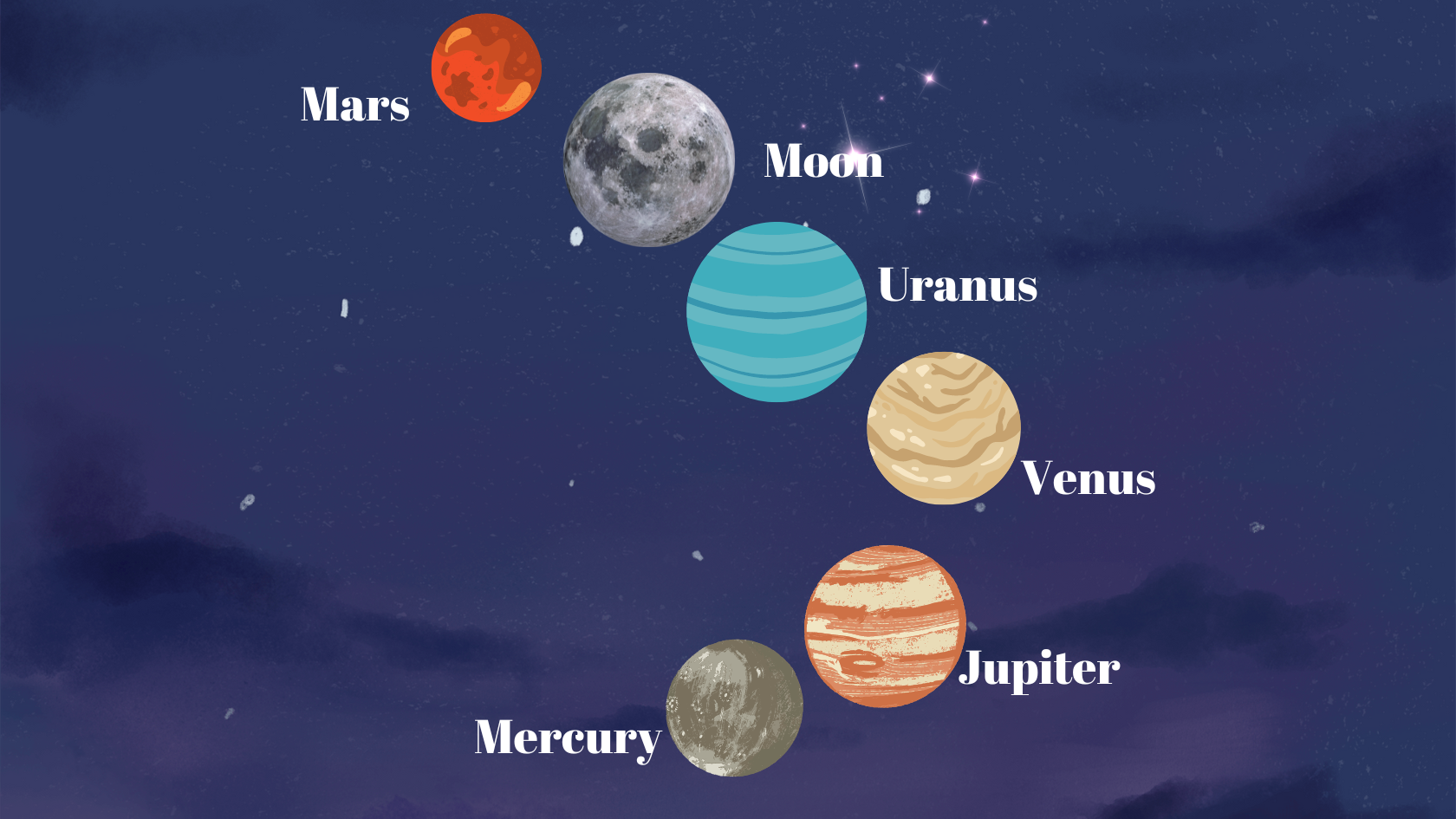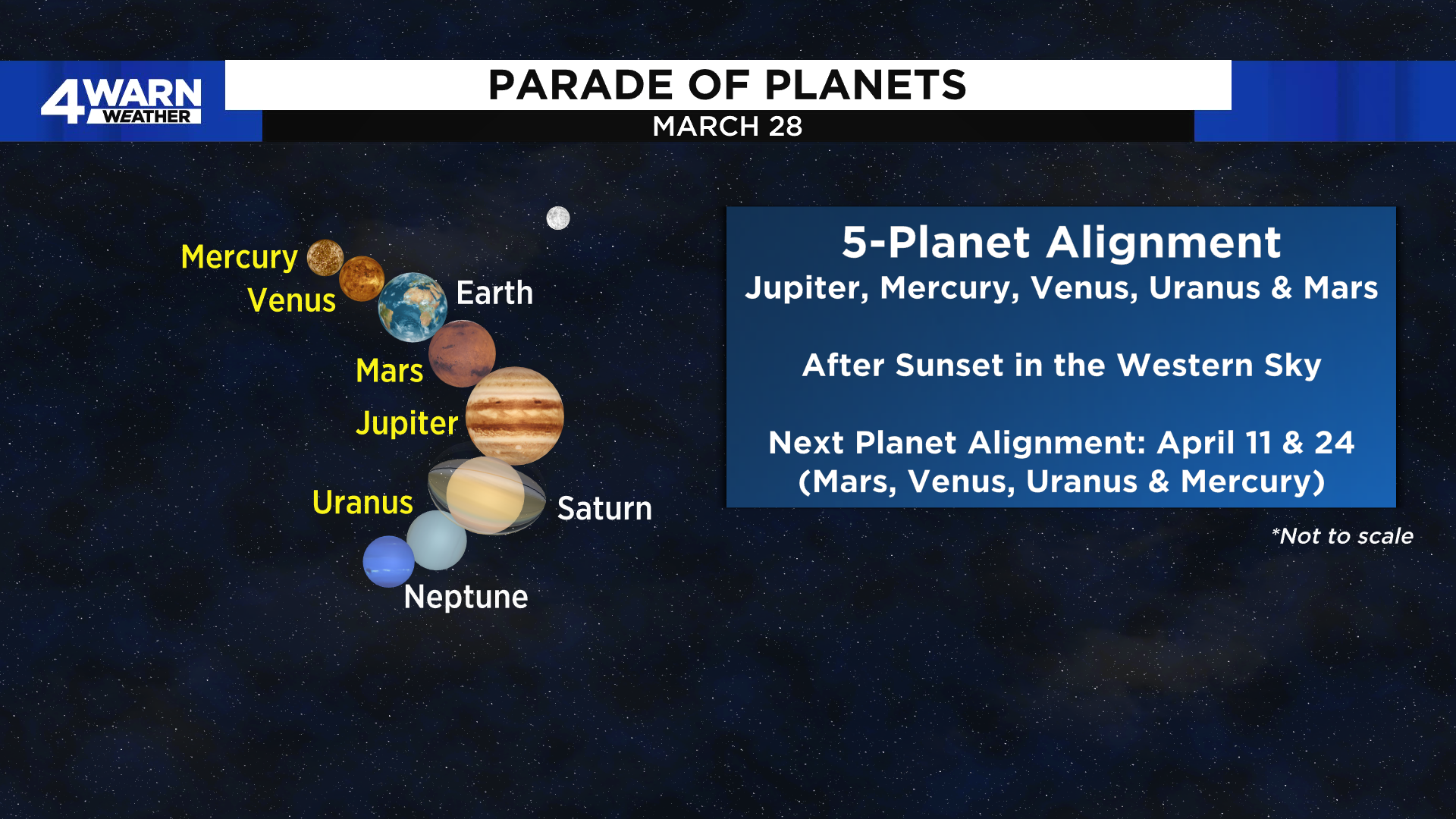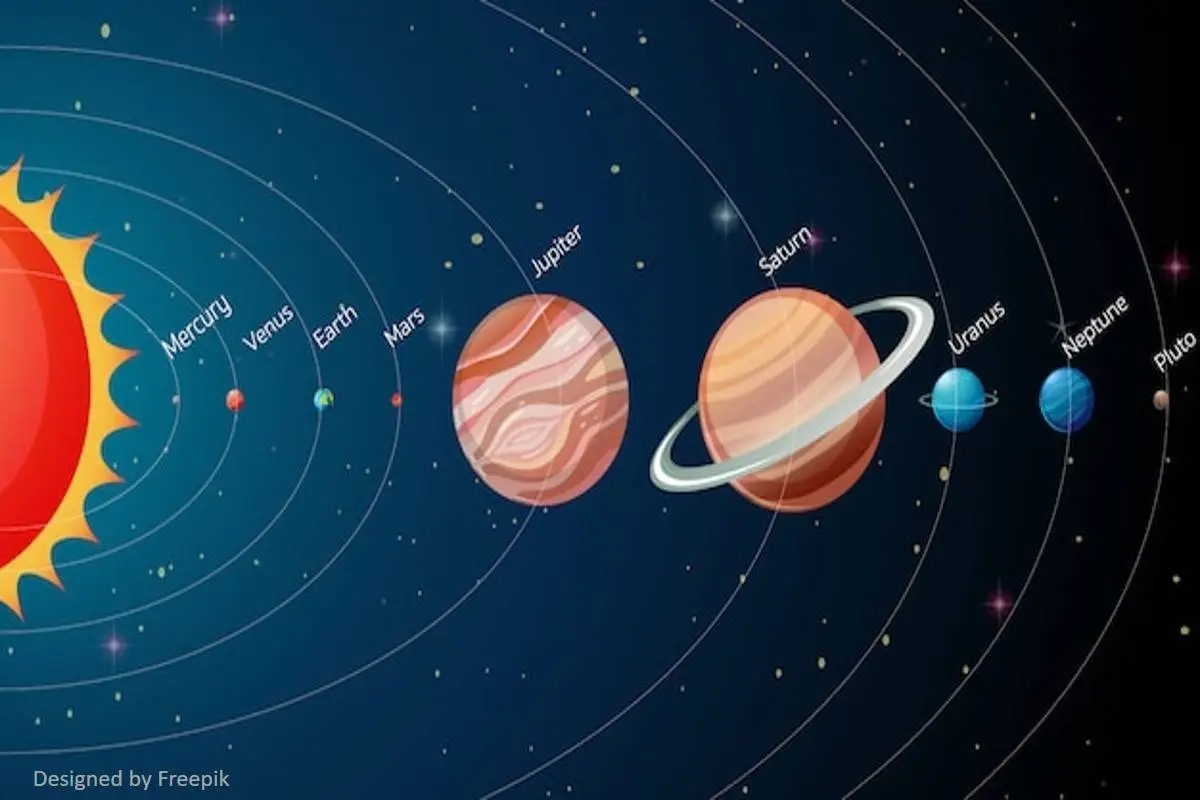Something truly special is coming to the night sky, and people who love looking up are getting ready. It's a time when the planets, those familiar bright spots we see from Earth, will appear to line up in a rather striking way. These celestial happenings, often called a "planetary alignment," draw many eyes skyward, giving us all a chance to see our cosmic neighborhood put on a show. It is that kind of event which makes you feel connected to something much bigger.
You know, the idea of planets getting into a neat row can sound like something out of a science fiction story, but it is actually a real thing that happens because of how our solar system is set up. From our spot here on Earth, these distant worlds sometimes seem to gather together in a way that looks quite organized. This appearance is all about perspective, of course, as the planets are still very much spaced out in their individual paths around the sun. It's almost like watching cars on a very, very big race track; they might look close together at certain points, but they are still on their own tracks.
These moments when the planets appear to gather are quite popular with people who enjoy astronomy, or just anyone who likes to gaze at the stars. There are a few specific times coming up in 2025 that folks are talking about, offering some truly wonderful chances to witness these sky shows. It really is a simple joy to just look up and see what the universe has to offer, and these alignments just give us a little extra reason to do so, don't they?
Table of Contents
- What Is a Planetary Alignment, Really?
- The Great Show of February 2025 - A Planetary Alignment Event
- What About the August 2025 Planetary Alignment?
- Why Do We Care About a Planetary Alignment?
- Is a 'Planet Parade' a Proper Term for a Planetary Alignment?
- How Do Planets Move to Create a Planetary Alignment?
- Looking Back at Early 2025 Planetary Alignment Views
- A Quick Summary of the Planetary Alignment Events
What Is a Planetary Alignment, Really?
When we talk about a planetary alignment, we are describing a situation where a few planets seem to form a line in the sky when you look at them from Earth. This is a pretty important point to remember, actually. It does not mean that the planets are physically lining up in a straight row out in space, like beads on a string. That is just not how their orbits work, you know. Instead, it is all about our point of view from our home planet. Imagine you are watching a few cars driving around a very big circular track at different speeds. At certain moments, from your spot, they might appear to be right next to each other, even if they are still quite far apart on the track itself. That is sort of how it is with these sky shows, in a way.
The planets in our solar system are always moving, each on its own path around the sun. They are not all on the same flat plane, either; some are a little bit above or below the main path. So, when they appear to line up, it means their positions relative to Earth and the sun create this visual effect. It is a bit like a cosmic optical trick, if you think about it. People often get very excited about these events because it is not every day you get to see so many of our neighbors in the sky all at once, is that right? It gives you a real sense of the vastness of space and our place within it, something that is truly special to observe.
The Great Show of February 2025 - A Planetary Alignment Event
Get ready for quite a sight on the evening of February 28, 2025. On that particular night, all seven of the other planets in our solar system will show themselves in the night sky at the same time. This is a pretty big deal for people who like to look at the stars, or really, anyone who just enjoys a good sky show. The planets that will be visible include Saturn, Mercury, Neptune, Venus, Jupiter, and Uranus. It is a full house, so to speak, of our planetary neighbors. This kind of event does not happen all the time, so it is something many people will want to catch. You know, it is a rare alignment of seven planets, and Mercury will be joining the six others that are already easy to spot in the night sky.
For weeks leading up to this, people who love outer space have been getting ready for this big planetary alignment, or what some call a "planetary parade." It is expected to be a truly striking view, especially as it concludes just after dusk. The way these planets will arrange themselves in the sky is quite extraordinary, forming what some are calling a "great planetary" pattern. This means they will appear together, creating a visual grouping that is quite distinct. It is a moment when you can really feel the movement of our solar system, just by looking up. So, if you are thinking about it, mark your calendars for this one, as it promises to be a memorable evening for sky-watchers.
What About the August 2025 Planetary Alignment?
Beyond the big February event, there is another notable gathering of planets happening a bit later in 2025. Around August 10, 2025, a different kind of planetary alignment will take place. This one will involve six planets, making it what some people call a "large alignment." The best time to see these planets will be about an hour before the sun comes up. So, you will need to set your alarm a little early to catch this particular show. It is a very different viewing experience compared to an evening alignment, as the early morning sky has its own special feel, doesn't it?
To add to the beauty of this early morning sky scene, a full moon will also be present around that time. Imagine seeing six planets appearing together, with the bright glow of a full moon nearby. It is quite a picture, really. This August alignment offers another chance to connect with the cosmos, even if it means getting up when it is still quite dark. It is a testament to the continuous movement of our solar system that these events happen at all, offering different views at different times of the year. So, if you miss one, there is often another chance to look up and see something special, which is nice.
Why Do We Care About a Planetary Alignment?
You might wonder why these planetary alignments capture so much attention. Well, there is a deep sense of beauty in the ongoing movement of the planets, a kind of continuity that is quite moving. It is a reminder that the universe is always in motion, always changing, yet also following predictable patterns. You know, you do not really need a rare eclipse or a planetary alignment to have a good reason to look up at the sky. The night sky is always there, always offering something to see, whether it is a single bright star or the gentle glow of the moon. But these special gatherings of planets just add an extra layer of wonder, don't they?
For many, seeing a planetary alignment is a moment of connection, a chance to feel part of something much bigger than ourselves. It is a simple pleasure, really, to step outside and witness these distant worlds appearing to come together. It helps us remember that we are all on this one planet, spinning through space, and sharing a common view of the cosmos. The "why it matters" often comes down to that feeling of awe, that quiet moment of appreciating the grand scale of things. It is a gentle reminder that there is always something incredible happening above us, if we just take a moment to notice it.
Is a 'Planet Parade' a Proper Term for a Planetary Alignment?
You might hear the phrase "planet parade" used quite a bit when people talk about these events. It is a fun, catchy way to describe what is happening, and it certainly paints a vivid picture, doesn't it? However, it is important to know that "planet parade" is not a formal, technical term used by astronomers. It is more of a popular expression, something people use to make the idea of many planets visible at once sound more exciting and approachable. So, if you hear it, you know what they mean, but it is not something you would find in a science textbook, per se.
The term "planetary alignment" itself can also refer to a few different situations in astronomy. It is not just one specific thing. Sometimes it means planets are in the same general area of the sky, sometimes it is about them appearing in a line, and other times it might refer to their actual positions in their orbits relative to each other. So, while "planet parade" is a nice, descriptive phrase for when a bunch of planets are visible together, "planetary alignment" is the more general term that covers these various visual groupings. It is good to keep that in mind, just so you have a clearer picture of what people are talking about.
How Do Planets Move to Create a Planetary Alignment?
The way these visual alignments happen is all thanks to the constant movement of the planets in our solar system. As the planets of our solar system travel around the sun, each on its own path, their positions change all the time. Think of it like cars on a very big, very spread-out race track, as I said before. Each car is going at its own speed, and some are on inner lanes while others are on outer lanes. From a certain viewing stand, like Earth, sometimes a few of those cars will appear to be lined up, or clustered together. That is basically what happens with the planets, you know.
They are not stopping or slowing down for us to see them in a neat row. They are just following their usual orbital paths. It is simply a matter of perspective, and the fact that their orbits sometimes bring them into a configuration that looks like a line from our point of view. So, when you see a planetary alignment, you are really seeing the natural, continuous dance of the solar system, caught at a particular moment in time. It is a powerful reminder of the grand scale of things and the constant motion that defines our cosmic home. It is quite amazing, really, to think about all that movement happening far, far away.
Looking Back at Early 2025 Planetary Alignment Views
It is worth noting that the sky has already been putting on some shows in early 2025, setting the stage for these upcoming events. For instance, in January 2025, several planets were already visible in the night sky. Venus, Mars, Jupiter, Saturn, Uranus, and Neptune were all out there for people to see. This gave many people a chance to get a good look at these distant worlds even before the bigger alignments. It is a good way to get used to finding them, so to speak, before the really big show.
Then, in February 2025, Mercury joined the fun. This meant that all seven of our planetary neighbors were visible. This kind of gradual gathering makes the bigger alignment on February 28 even more exciting, as it is the culmination of these earlier sightings. It is like the planets are slowly coming together for a grand performance. For weeks, outer space enthusiasts have been getting ready for this planetary alignment, or "planetary parade," which was expected to finish up on a Friday evening, just after dusk. In February 2025, the seven planets joining Earth in our solar system were indeed visible all at once in the night sky, arranged in an extraordinary pattern called a "great" planetary gathering. It really was something to see.
A Quick Summary of the Planetary Alignment Events
So, to recap what we have talked about, there are some pretty exciting sky events coming up. We covered how a planetary alignment means planets appear to form a line from Earth, not that they are physically lined up in space. We also looked at the big event on February 28, 2025, when seven planets—Venus, Mars, Mercury, Jupiter, Saturn, Uranus, and Neptune—will converge for what is called a "great alignment" or "planetary parade" in the sky. This will be visible in the evening. We also touched on the August 10, 2025, alignment of six planets, which you will want to see about an hour before sunrise, with a full moon present. We talked about why people find these events so interesting, the beauty in the continuous movement of the cosmos, and how you do not need a rare event to simply look up. Finally, we clarified that "planet parade" is a popular term, not a technical one, and how planetary alignment can mean a few different things visually. We also went over how the planets' regular orbits create these apparent groupings and mentioned the earlier sightings of planets in January and February 2025 that led up to the larger February alignment.


